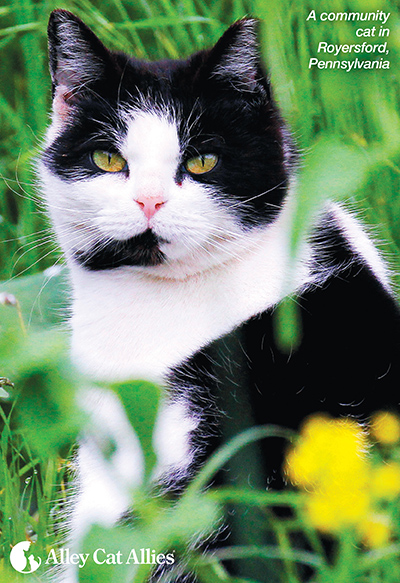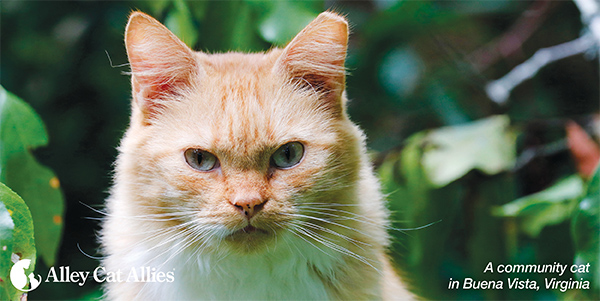
Alley Cat Allies defends lifesaving Trap-Neuter-Return (TNR) and exposes misrepresentation
 When Alley Cat Allies first formed in 1990, our raison d’être was to challenge a widespread mindset that nonlethal programs for cats were an out-of-reach ideal. At the time, TNR, the only humane and effective approach to community cats, was considered a pipe dream.
When Alley Cat Allies first formed in 1990, our raison d’être was to challenge a widespread mindset that nonlethal programs for cats were an out-of-reach ideal. At the time, TNR, the only humane and effective approach to community cats, was considered a pipe dream.
With the help of our earliest supporters—many of whom are with us to this day—Alley Cat Allies broke through barriers, proved the efficacy of TNR, and launched it into the mainstream. Today, TNR programs thrive in communities around the world.
But though TNR is backed by science and popular demand, it still faces dangerously misinformed portrayals in the media and beyond. TNR opposition calls for killing cats outdoors, all while dismissing TNR’s effectiveness and insulting the people working hardest to help cats and their communities.
Alley Cat Allies confronts biased hit pieces against TNR in news outlets, including The New Yorker, and educates decision-makers and the public with the facts. In doing so, we defend TNR, cats, and our supporters like you, who care for and advocate for cats every day.
What is Trap-Neuter-Return (TNR)?
The TNR process is simple: community cats are humanely trapped, brought to a veterinary clinic to be spayed or neutered, vaccinated, eartipped (the universal sign that a cat has been spayed or neutered through a TNR program), and microchipped, then are returned to their outdoor homes.
The Facts About Community Cats and TNR
- Community cats are at home outdoors. They thrive in their outdoor homes and have thousands of years of history as members of our communities. They are bonded to their territory and their feline families.
- TNR benefits cats and communities. Spaying or neutering means fewer kittens born outdoors and the end of stresses related to mating or pregnancy. Additionally, vaccinations provided during TNR improve cats’ health and address community health concerns—though cats are extremely unlikely to spread rabies, toxoplasmosis, or any other diseases.
- TNR is sound public policy. It reduces calls to animal control, the number of cats entering (and being killed in) shelters, and taxpayers’ expense, all while meeting public demand for effective, meaningful, and lifesaving action for cats.
- Killing cats doesn’t work. TNR opponents’ “alternatives” to TNR come down to rounding up and killing cats. However, this was the status quo for decades and failed miserably due to the Vacuum Effect—a phenomenon in which other cats move in to take advantage of the resources that sustained the colony that was removed.
- Cats have an important place in ecosystems. Whenever they are removed in large numbers, the consequences are dire—not just for the cats but for local wildlife. The reality is cats are not a major threat to wildlife species, endangered or otherwise.
- We can protect both cats and wildlife. By advocating for stronger TNR programs AND policies that curb human-led activities that are the true threats to wildlife—like habitat destruction and pollution—we improve the lives of cats, wildlife, and us all.
It’s time for communities, local governments, and media outlets to stop wasting words, money, and time on calls to backtrack to the dark ages of killing cats and kittens endlessly. TNR is the only way forward.
Our defense of TNR is expanded upon in a larger piece at alleycat.org/DefendTNR.


